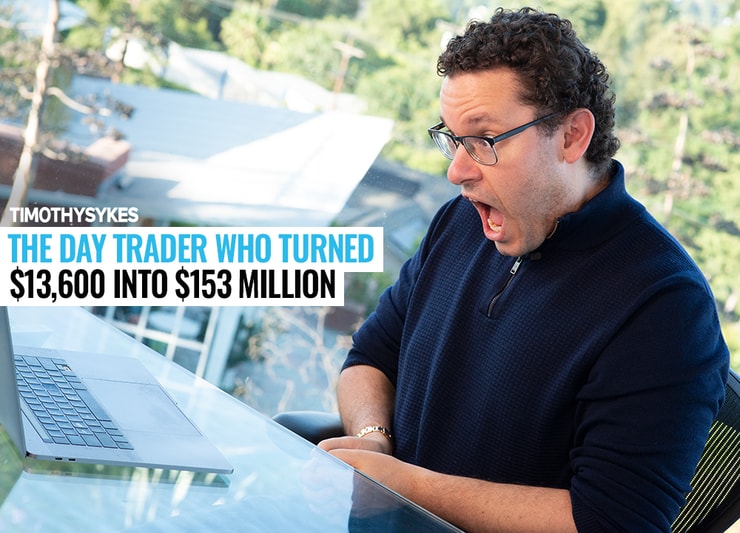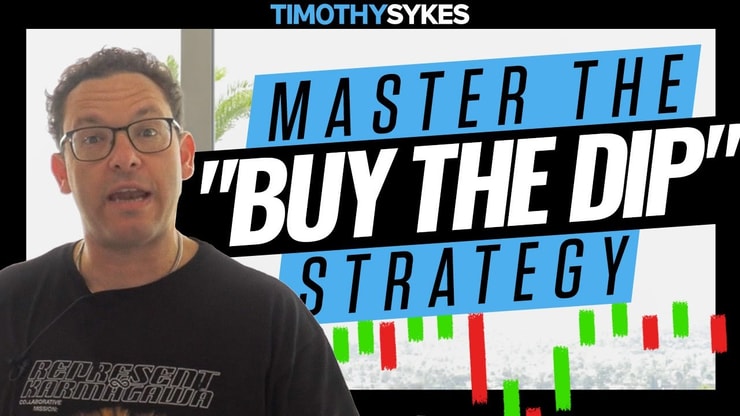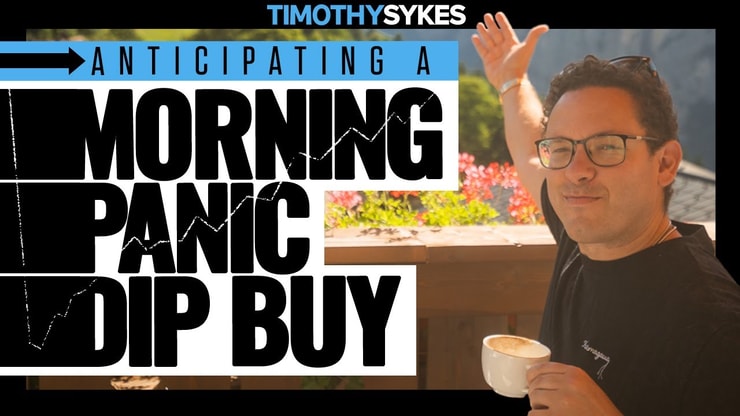Takashi Kotegawa (aka BNF/J-Com man) is one of Japan’s most famous day traders. He’s also one of the most famous traders in the business.
He apparently made a fortune trading stocks on the Tokyo Stock Exchange in the early 2000s, putting many Wall Street traders to shame.
If you’re inspired by my feat of turning $12,415 into $7.7 million (learn more in my book “An American Hedge Fund”)…
… or if you’re impressed by top Challenge trader Tim Grittani who turned $1,500 into over $13.5 million in 10 years…
Prepare to be even more inspired when you read this guy’s story!
Legend has it Takashi Kotegawa started with the equivalent of $13,600. He benefited from some luck and a lot of skill to rack up $153 million in about eight years. Sometimes he made millions per trade.
While primarily a stock trader, Takashi has been known to trade in a variety of financial instruments.
So … how did he do it?
We know he’s used short-term trading strategies, capitalizing on quick market movements for gains.
We know he’s not just throwing darts — he utilizes leverage to increase risk but also potential reward.
The exact details are a bit of a mystery — there’s little information on the news about his trades and strategies. His results landed on the front page and were discussed in newsletters. He’s definitely been subject to significant taxes on his trading profits.
But we haven’t heard much about how he makes his trades. And to add to the intrigue, the guy seems to have disappeared…
But here’s what I’ve managed to dig up on the mysterious and obscure trader Takashi Kotegawa.
Let’s go!
Table of Contents
- 1 Who Is Takashi Kotegawa?
- 2 Takashi Kotegawa’s Most Legendary Deal
- 3 What Do We Know About Takashi Kotegawa’s Trading Strategies?
- 4 The Importance of Having the Right Trading Mindset
- 5 BNF Trader Takashi Kotegawa Net Worth
- 6 Takashi Kotegawa: A Role Model Beyond Trading
- 7 The Bottom Line: What Can You Learn From Takashi Kotegawa — The Japanese Trader Who Made Millions?
- 8 FAQs
- 8.1 Did Online Games Influence Takashi Kotegawa’s Trading Style?
- 8.2 Did Takashi Kotegawa Write a Book?
- 8.3 What Role Does Japanese Culture Play in His Life?
- 8.4 How Is Takashi Kotegawa Covered in Media and Influencer Circles?
- 8.5 Does Kotegawa Engage in Social Media Platforms?
- 8.6 Are There Any Personal Interests That Shaped Kotegawa’s Trading Style?
Who Is Takashi Kotegawa?

Here’s what we know: Takashi Kotegawa was born on March 5, 1978, in Ichikawa, Chiba, Japan.
He started trading stocks on the Tokyo Stock Exchange in the bear market of 2001.
Despite his massive net worth, he stays humble. He doesn’t buy fancy cars or eat lavish meals. He rides a bike and likes to eat ramen.
One thing he did splurge his savings on … a top-floor apartment that he bought for 400 million yen (over $2.6 million at 2023 exchange rates).
Takashi’s also known in the Japanese trading community by his chatroom username “BNF.” And he earned the nickname “J-Com man” after one of his most famous trades…
In 2005, he made millions on a single trade in J-Com Holdings after its IPO on the Tokyo Stock Exchange.
I don’t usually advise my Trading Challenge students to buy IPOs. They have no chart, and are too unpredictable. But this one was special…
A trader at Mizuho Securities accidentally sold 610,000 shares at 1 yen each instead of selling one share at 610,000 yen. Ouch.
The huge sell order sent the stock price crashing. And Takashi saw an opportunity.
He bought 7,100 shares while the price was down. But he wasn’t the only one. The low price caught the attention of other traders and investors. A buying frenzy followed…
Takashi sold part of his position into the bounce and held some shares overnight. By the end of the trade, he had made more than $17 million!
Buying panics and selling into the bounce is my favorite strategy…
Takashi’s approach can be influenced by market conditions and news events, making adaptability a cornerstone of his trading style.
Takashi Kotegawa’s Most Legendary Deal
Takashi Kotegawa, a name that resonates in the trading world, especially when you talk about legendary deals. This guy turned a mere $13,000 into hundreds of millions, all from the comfort of his bedroom. Yeah, you heard that right. A bedroom trader who made it big. Now, that’s a level of success that’s hard to ignore.
The deal that put him on the map involved a Japanese pharmaceutical company. Kotegawa bought shares before a merger announcement, and the stock price skyrocketed. He cashed out with a fortune. This wasn’t luck; it was a calculated move. Just like I always say, trading is about patterns and making informed decisions. I’ve been teaching this stuff for years, and when you get it right, the changes to your life and portfolio can be monumental.
But here’s the kicker: Kotegawa’s legendary deal wasn’t just about making money; it was about proving that with the right strategy and mindset, anyone can succeed in trading. It’s a fact that I’ve seen play out time and again with my students.
What Do We Know About Takashi Kotegawa’s Trading Strategies?
There aren’t a lot of specific details or news articles about Takashi Kotegawa’s trading strategies. We know the big J-Com trade Takashi Kotegawa is known for was partially based on luck…
But he also uses an effective swing trading strategy. He employs advanced trading tools and algorithms, giving him an edge in a competitive field.
Unlike me, he doesn’t share every trade publicly or share much information about how he made his millions.
But he has become a mentor to a generation of traders who are still studying his success. Apparently, he thinks it’s easier to make money in bear markets than in bull markets. He looks for short-term rebound plays in stocks that are down.
Some describe Takashi Kotegawa’s trading style as divergence day trading. He uses indicators like Bollinger Bands®, relative strength index (RSI), volume ratio, and the 25-day moving average. He likes to buy stocks that are at least 20% below the 25-day moving average and profit from the bounce.
But he doesn’t treat all stocks the same…
Since the markets constantly change, he adapts the percentage he looks for based on the overall market and individual industry or sector. He gets a feel for how stocks in different sectors move and how fast they rebound.
Like all day traders, he likes to capitalize on momentum.
In this video, a reporter claims Takashi is a former video game champion and “a gambler at heart.” Yet, he stays disciplined and allegedly has a 60% win rate.
Like me, he cuts losses quickly. But he has more patience and lets his winners run. He’ll hold positions for up to a few days.
I prefer day trading. The advantages of day trading are numerous, including the ability to make quick decisions and adapt to market conditions. It’s a style that can offer you flexibility and the potential for significant gains if you know what you’re doing. If you’re interested in understanding the benefits of day trading, here’s a comprehensive guide on the advantages of day trading.
The Importance of Having the Right Trading Mindset

Takashi Kotegawa has the right trading mindset.
A trader like Takashi doesn’t just wing it; he requires knowledge and skill in analysis to make informed decisions. He also requires strict risk management and discipline, ensuring that he stays in the game for the long haul.
His style requires emotional control and mental toughness; they help him navigate the ups and downs without losing focus.
To me, it doesn’t seem like he’s focused on gains. For one, he doesn’t show off his wealth or spend his cash on flashy cars or big purchases.
And he doesn’t carry around large amounts of cash. His concern is its presence would hurt his ability to make smart trading decisions — in penny stocks or other securities.
He prefers to focus on price action, charts, market sentiment, and hot sectors.
Want to learn more about day trading penny stocks? Get my FREE guide to trading penny stocks here!
What Does a Good Trading Mindset Look Like?
A good trading mindset is a growth mindset. In the context of trading, it’s the belief that you can develop your talents by studying hard, making sound trading plans, and seeking advice from successful traders.
Traders with a growth mindset achieve more because they realize success takes lots of hard work. By working hard, they improve their results and strengthen their belief that it’s because of hard work. It’s a self-reinforcing cycle that pushes you to keep working hard and getting better each day.
YOU SHOULD STUDY HARD EVERY SINGLE DAY, EVERY SINGLE NIGHT NO MATTER IF IT'S THE WEEKEND AS LONG AS YOU HAVE AIR IN YOUR LUNGS, STUDY, STUDY, STUDY & YOU'LL BE SHOCKED AT WHAT YOU WILL LEARN/ACCOMPLISH OVER TIME. GIVE IT A FEW YEARS & THANK ME LATER! #NODAYSOFF #HOWBADDOYOUWANTIT
— Timothy Sykes (@timothysykes) October 10, 2020
The great thing about a growth mindset is it makes you see that talent isn’t everything. Raw talent gives you a head start, but you’ve gotta put it to work to succeed.
The same goes for people with average trading skills. If you keep studying hard, you’ll improve your skills and become a self-sufficient trader.
Having the right mindset is crucial, but it’s also essential to have a set of effective day trading strategies. These strategies can serve as your roadmap, guiding you through the complexities of the market. Whether it’s swing trading, momentum trading, or something else, having a strategy can make all the difference. For a deep dive into various day trading strategies, check out this detailed article.
BNF Trader Takashi Kotegawa Net Worth
Speculation Alert: Some speculate that Takashi Kotegawa, known as BNF, now has a net worth in the billions, including stocks and real estate holdings. While this is speculation and BNF’s exact net worth isn’t publicly known, it wouldn’t be surprising if he were worth at least $1 billion given his significant investments. According to these rumors, he owns multiple buildings in Tokyo, major stocks in various corporations, and even a baseball team. His reclusive nature adds to the mystery, with only a few close friends knowing his true financial status.
According to Japan-based YouTuber Guanxinated, Kotegawa’s name has surfaced in the regulatory filings of 19 publicly traded companies as a significant shareholder from 2014-2021. Many of these stakes are substantial, reaching up to 5%.
Guanxinated’s analysis highlights specific instances of BNF’s investments, including his 3.12% stake in ImageOne in 2014 and his long-term holdings in companies like Ichikura, Faltec, and Orient Corporation. This level of investment shows a strategic and disciplined approach to investing. BNF’s continued success highlights the importance of understanding market dynamics and making informed decisions.
In addition to his stock market achievements, Kotegawa has supposedly also ventured into real estate, flipping the Chomp Chomp Akihabara building and purchasing commercial property in Sapporo.
Takashi Kotegawa: A Role Model Beyond Trading
Takashi Kotegawa isn’t just a trading legend; he’s a role model for how to approach life. Despite his massive success, he lives a simple life. He’s not into flashy cars or extravagant property; he’s content with what he has. This level of humility is rare, especially in an industry often characterized by ego and bravado.
What sets Kotegawa apart is his disciplined approach to both trading and life. He’s not swayed by market hype or the promise of quick riches. He sticks to his strategy, no matter what changes are happening in the market. That’s a lesson I try to instill in all my students. Trading isn’t just about making quick bucks; it’s about developing a sustainable strategy that can weather any market condition.
So, if you’re looking for a role model in trading and in life, Takashi Kotegawa is a name you should remember. His story proves that with the right mindset and strategy, you can achieve incredible things. And that’s a fact that can change your life for the better.
Takashi Kotegawa’s story is inspiring, but he’s not the only one who has found success in trading. There are numerous other traders who have turned small accounts into fortunes, proving that with the right strategies and mindset, success is attainable. If you’re looking for more inspiration, here are some day trading success stories that can motivate you to reach your own trading goals.
The Bottom Line: What Can You Learn From Takashi Kotegawa — The Japanese Trader Who Made Millions?

In a lot of ways, Takashi Kotegawa has a similar mindset and strategy to my own.
He cuts losses quickly, doesn’t focus on money, and looks for patterns that repeat and that have worked for him in the past.
He even likes to buy stocks when they’re down and profit from the bounce. It’s similar to my favorite pattern — the morning panic dip buy.
Here’s another video on that pattern:
But the major differences? He trades with a massive account and takes huge position sizes.
That and the lack of details about his approach makes it hard for new traders to learn from or replicate. And after the market crash in 2008, it’s rumored that Takashi left the stock market and started to invest in real estate.
So we may never know the details of how this famous trader made his millions.
But he’s a trader, not a teacher…
Trading Challenge

I, on the other hand, love to teach. I didn’t have a teacher when I started trading. I had to learn from my losses and dumb mistakes to meet my trading goals. It was frustrating.
Now it’s my job to teach students everything I’ve learned from my 20+ years of experience trading penny stocks. I’ve made over $7.7 in profits over my career, and I share all my trades publicly to help other traders learn.
I’ve also made thousands of video lessons and I give weekly live trading and Q&A webinars for Trading Challenge students, Plus, students get access to archived webinars and a community of traders and experts in my Challenge chat room.
Takashi’s journey can serve as inspiration for other traders and investors, showing what’s possible with the right strategies and mindset. But it’s up to you to learn these lessons yourself.
I have over 30 millionaire students and all of them have come from my Trading Challenge online course. If you want to learn the combination of patterns and strategies I use — apply today.
Do you aim for small gains like me, or try to rack up big wins like Takashi Kotegawa? Let me know in the comments … I love to hear from my readers!
More Breaking News
- Market Whisper: Is Canaan Inc. a Hidden Gem Amidst Recent Gains?
- VCIG’s Latest Moves: A Boom or Bubble in the Making?
- FuboTV Faces Roller Coaster Ride Amid Ongoing Business Turmoil and Legal Scrutiny
FAQs
Did Online Games Influence Takashi Kotegawa’s Trading Style?
Takashi Kotegawa has often drawn parallels between games and day trading. While not specifically confirmed, it’s interesting to consider how browser-based strategy games might influence his approach to trading. Some even liken his trading strategies to the complex dynamics found in online games.
Did Takashi Kotegawa Write a Book?
Takashi Kotegawa has not authored a book detailing his trading strategies or his remarkable journey in the stock market. Despite his immense success and the curiosity surrounding his methods, BNF remains a private individual who prefers to keep his techniques and personal life out of the limelight.
For those looking to emulate BNF’s success, it’s essential to focus on learning and understanding market dynamics through other resources. While BNF hasn’t shared his methods in a book, the principles of disciplined trading, market analysis, and psychological fortitude remain universal. By studying these principles, traders can develop a robust trading strategy, much like BNF, who exemplifies the pinnacle of day trading success.
What Role Does Japanese Culture Play in His Life?
Takashi Kotegawa is deeply rooted in Japanese culture. While he is best known for his prowess in trading Nikkei 225 stocks, he also has a fondness for anime and manga. Some speculate that elements of kawaii and even cosplay might have influenced his personal style, but this is more in the realm of fan theories.
How Is Takashi Kotegawa Covered in Media and Influencer Circles?
Though a private individual, Takashi Kotegawa has garnered attention from various media platforms. Photography and beauty blogs have analyzed his few public appearances, dissecting his lifestyle choices and fashion. Moreover, foodie bloggers have shown interest in his dietary habits.
Does Kotegawa Engage in Social Media Platforms?
Though not a blogger or youtuber himself, Takashi Kotegawa’s story is often covered by vloggers and influencers interested in day trading and investment strategies. These vlogs are available in both Japanese and English, catering to a broader audience.
Are There Any Personal Interests That Shaped Kotegawa’s Trading Style?
Not much is known about Takashi Kotegawa’s personal interests outside of trading. However, his rare interviews are mostly conducted in English, signaling a likely comfort or interest in the language. His knack for identifying the right ‘bell’ or market signals also indicates a strategic mindset, which could be influenced by interests in travel or music, though this is largely speculative.




Leave a reply